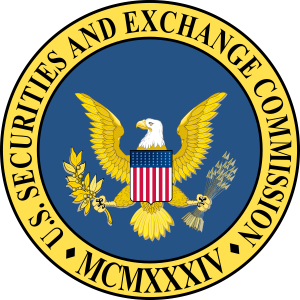 The new SEC rules lifting the ban on general solicitation and general advertising in certain private offerings go into effect today, September 23, 2013. Beginning today, issuers in Rule 506 offerings may generally solicit investors and advertise their offerings provided they take reasonable measures to ensure that each purchaser is an accredited investor. The new rules are contained in new Rule 506(c) under Regulation D. An analysis of the standards that govern what are reasonable verification methods can be found in my previous post here.
The new SEC rules lifting the ban on general solicitation and general advertising in certain private offerings go into effect today, September 23, 2013. Beginning today, issuers in Rule 506 offerings may generally solicit investors and advertise their offerings provided they take reasonable measures to ensure that each purchaser is an accredited investor. The new rules are contained in new Rule 506(c) under Regulation D. An analysis of the standards that govern what are reasonable verification methods can be found in my previous post here.
Related Proposed Rules Not Effective Yet
Readers of this blog may also recall that the same day the SEC issued the new final rules on lifting the ban, it also issued related proposed rules which, if enacted, would impose additional restrictions on Rule 506(c) offerings which may deter issuers from conducting these offerings in the first place. Specifically, the proposed amendments would require the filing of a Form D before the issuer engages in general solicitation; require the filing of a closing amendment to Form D after the termination of the offering; require written general solicitation materials to include certain legends and other disclosures; require the submission to the SEC, on a temporary basis, of written general solicitation materials; and disqualify an issuer from relying on Rule 506 for one year for future offerings if the issuer, or any predecessor or affiliate of the issuer, did not comply, within the last five years, with Form D filing requirements in a Rule 506 offering. The proposed rules have created confusion over what exactly would occur on September 23. Thankfully SEC Chairman Mary Jo White made clear in a letter to Congressman Patrick  McHenry that issuers can rely on the new Rule 506(c) exemption beginning September 23 and that they are not required to comply with any aspect of the proposed rules until the SEC makes them final, at which time the SEC will provide transitional guidance for ongoing offerings that commenced before the effective date of any final rules.
McHenry that issuers can rely on the new Rule 506(c) exemption beginning September 23 and that they are not required to comply with any aspect of the proposed rules until the SEC makes them final, at which time the SEC will provide transitional guidance for ongoing offerings that commenced before the effective date of any final rules.
Impact on State Regulation
Importantly, securities sold in a Rule 506(c) offering will be deemed “covered securities” for purposes of Section 18(b)(4)(E) of the Securities Act of 1933, meaning that such securities will not be subject to the registration requirements of any state (apart from a state’s notice filing and filing fee requirements).
Old Rule 506 Offerings Without General Solicitation Still Available
General solicitation offerings under Rule 506(c) are no slam dunk. Even without the proposed rules, the new verification requirements will mean administrative burdens for issuers, and investors may resent the invasion of privacy. Thankfully, issuers will still have the option of engaging in traditional 506 offerings with no general solicitation under newly designated Rule 506(b), in which sales may be made to an unlimited number of accredited investors and up to 35 unaccredited investors. In Rule 506(b) offerings, accredited investors may continue to self-verify by signing certifications. But issuers will need to be generally mindful of the specter of integration. Any issuer conducting a 506(c) offering (with general solicitation) in close proximity with a 506(b) offering (without general solicitation) runs the risk that the two offerings will be deemed to constitute one non-exempt integrated offering, in which case the exemption will be blown for the entire combined offering.
